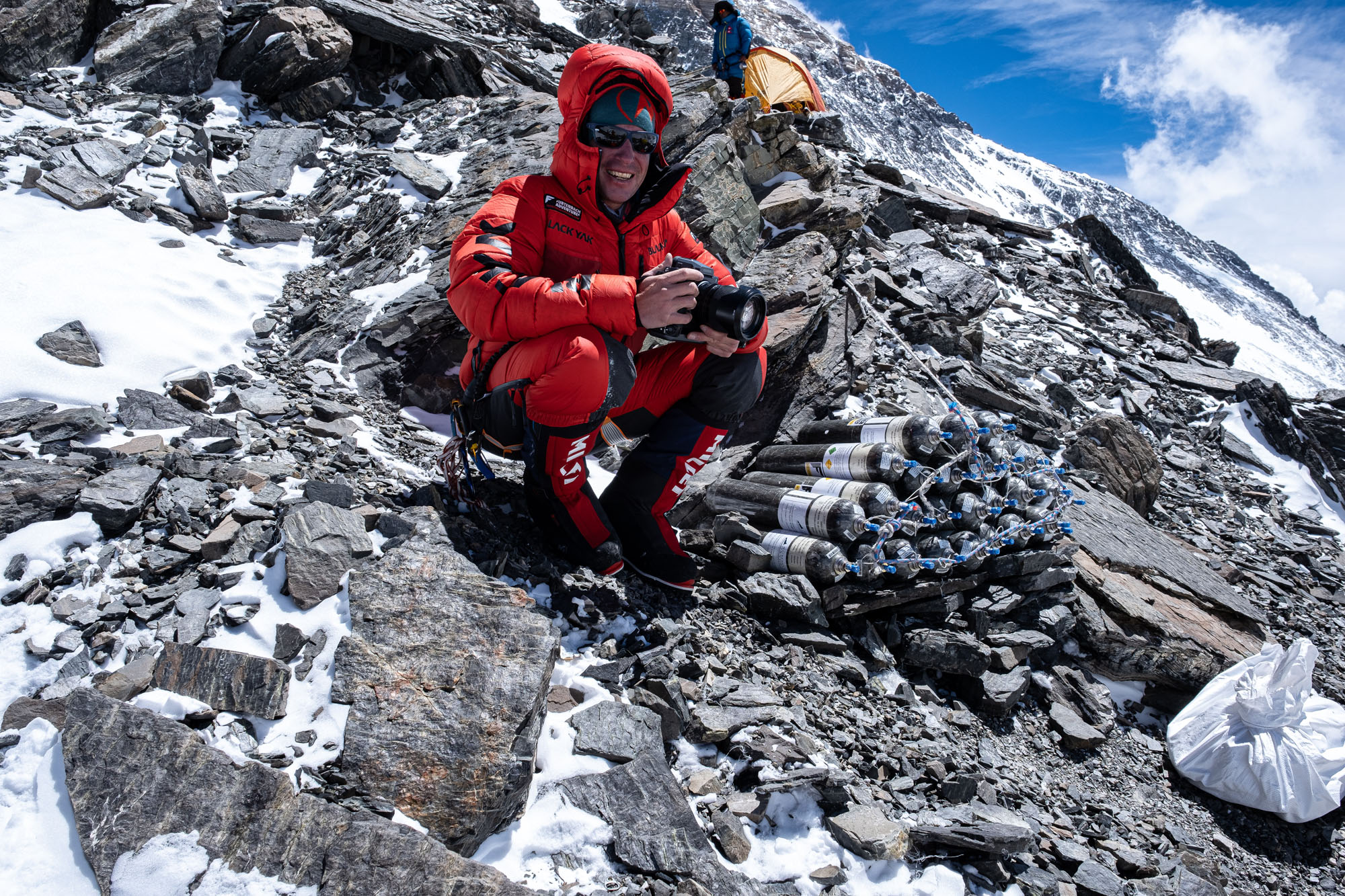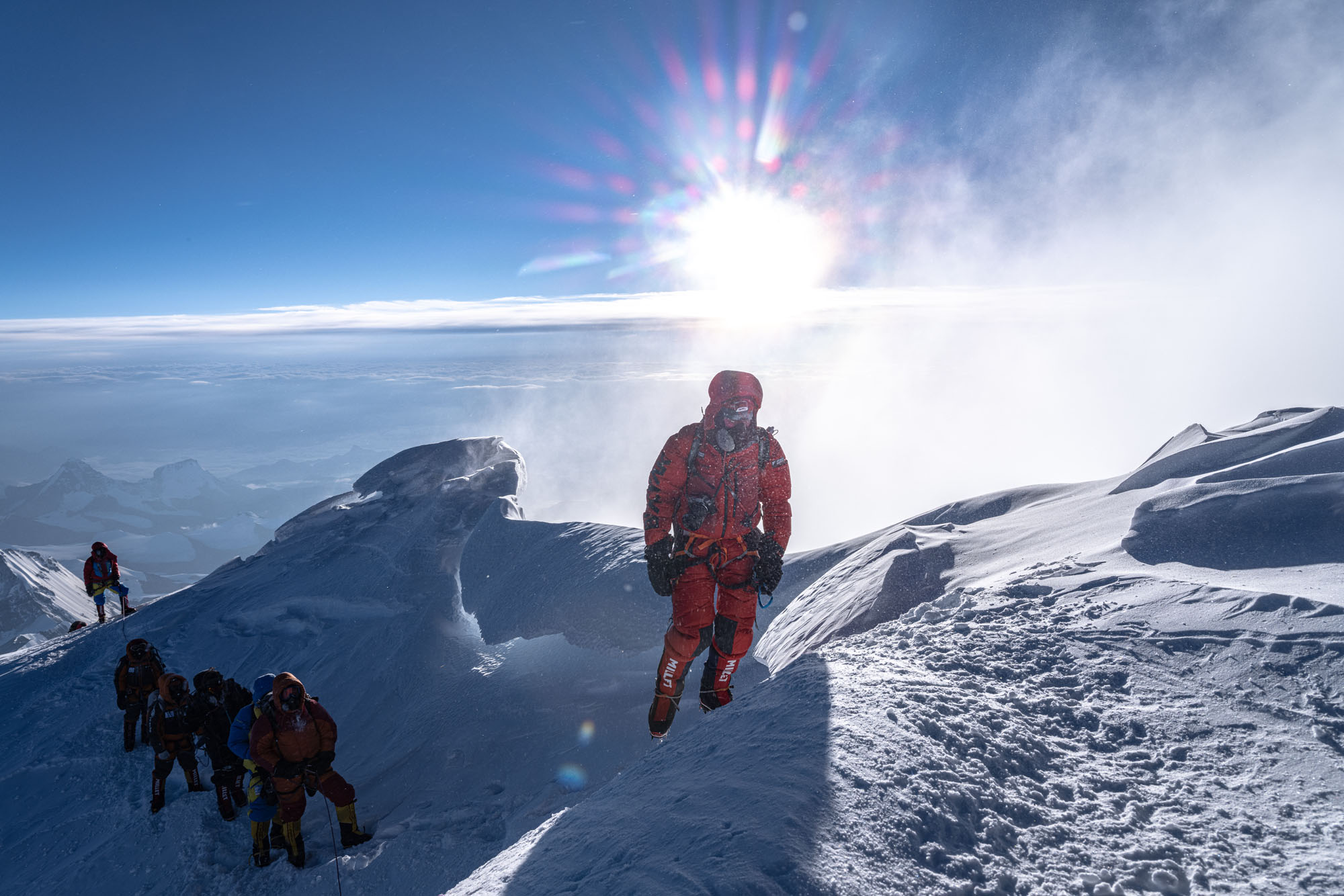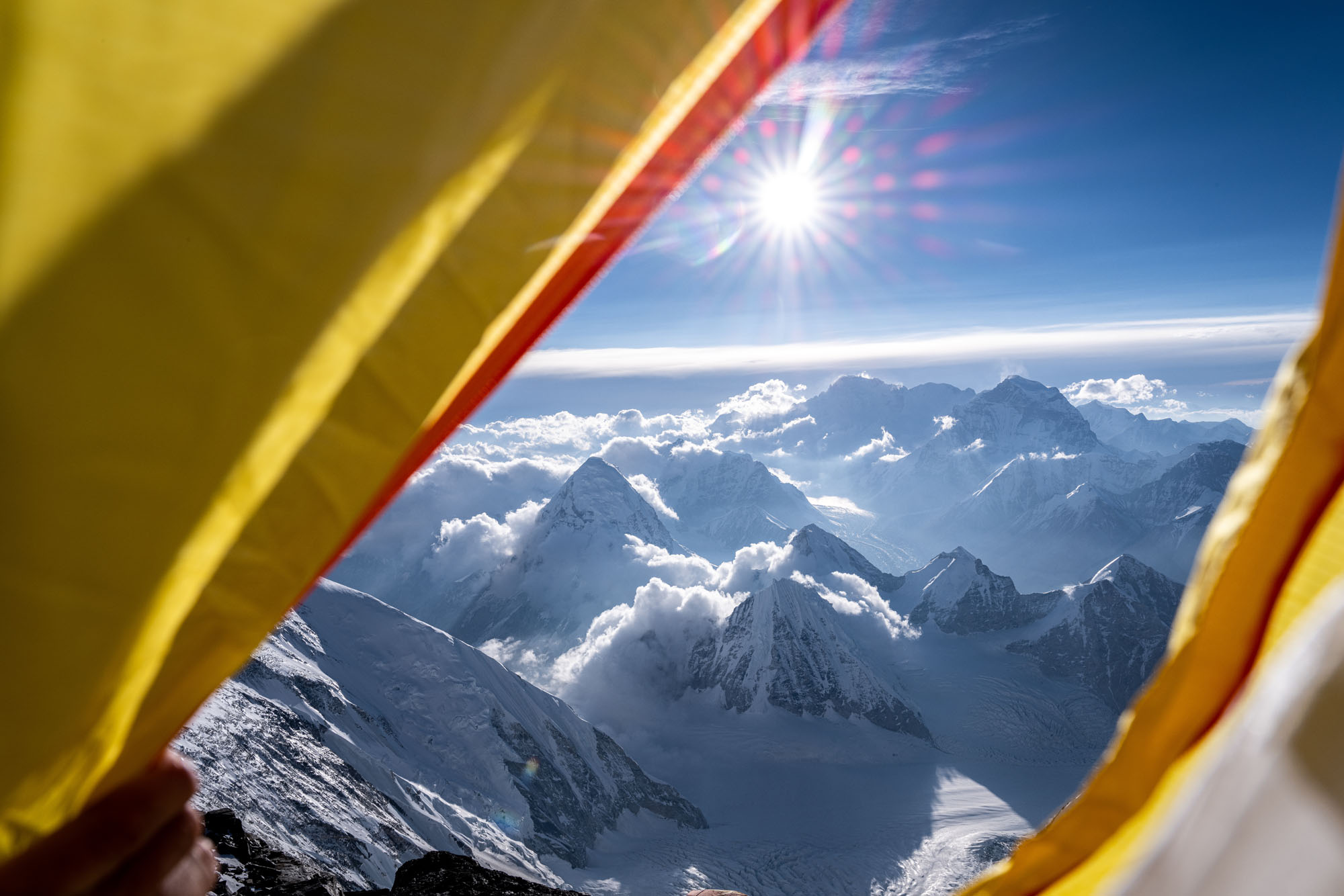The FUJIFILM GFX 100 is all about pushing boundaries – not only boundaries in image-making technology, but also boundaries in how far the technology can go to capture the perfect shot. It is fitting, then, that the final test for the GFX 100 is the ultimate test for both man and machine: conquering Mount Everest, the world’s highest peak. We catch up with lifelong mountaineer, adventurer, and photographer Lukas Furtenbach following a successful Everest summit with this remarkable camera.
Born and raised in the Austrian Alps, Lukas has always been interested in climbing, and with such a thirst for adventure, it was only a matter of time before he found his way to the Himalayas. “I have been a mountaineer and climber for my whole life, and it was early on that I became interested in photography and filmmaking in extreme environments,” says Lukas, going on to talk about teaming up with DOP Philip Flaemig. “We became more interested in filming expeditions and hard climbs and somehow we got fixated on Everest. This mountain became my passion,” he reveals.
Since then, the team has completed several Everest expeditions, focusing particularly on using new camera technology in this extreme and dangerous environment. “We did the first 4K and VR productions on Everest and used a camera drone to record at 27,230ft,” he tells us.
Lukas felt the Everest expedition was the ideal test for the GFX 100 for a number of reasons. “The GFX 100 is weather proof, has two battery slots for high-capacity batteries, and also has a very good grip for holding with gloves on,” he explains.
“After some days shooting with the GFX 100, I fell in love with the shape. In outdoor shooting conditions, it gives you a very safe and confident feeling,” he continues. “All this combines to make the camera perfect for the rough and challenging situations on Everest.”
With such extreme conditions bringing temperatures below -49°F, with snow, ice, and strong winds, the GFX 100 was certainly pushed to its limits. However, all testing aside, Lukas wanted a chance to capture this amazing part of the world in all its magnificence. “Everest is such a magical place, so why make compromises in image quality?” he grins.
An undertaking of this scale takes a large amount of preplanning, and in order to ensure he could capture the shots he needed, Lukas took two GFX 100 bodies, 14 batteries, three chargers, variable and ND polarizing filters, plus a number of lenses. These lenses included the GF23mmF4 R LM WR, GF63mmF2.8 R WR, GF250mmF4 R LM OIS WR, GF32-64mmF4 R LM WR, and GF100-200mmF5.6 R LM OIS WR.
The trip was not without its challenges, the biggest of which was the cold. “On summit day we had -40°F with windchill turning this to -58°F. The camera and lenses were in an insulated bag, with the batteries on my body inside my down suit and additionally heated with heating packs,” explains Lukas. “Taking the camera out of the bag and putting the batteries in while wearing thick down mittens is quite a challenge,” he continues. However, the camera performed outstandingly, capturing some very special shots.
The image above was taken from the interim camp at 19,000ft one evening and shows outstanding detail of the summit pyramid along with the whole climbing route from Camp 2 to the peak. The below photograph was taken from Camp 2 at a height of 25,600ft, and is one of Lukas’ personal favorites. “I checked in the evening to see how the weather was developing and the view from my tent was mind-blowing,” he beams. “These are the moments why we do all this.”
Overall, Lukas was extremely impressed with the camera, highlighting the extreme resolution, two battery slots, and In-Body Image Stabilization (IBIS) as his favorite features. “I think it is a perfect fit and will bring some movement in the market. The GFX 50S and GFX 50R were a huge step, and the GFX 100 is more expensive but still affordable for people using it professionally,” he says.
He goes on to talk about how important this type of photography is to him and how the GFX 100 will continue to play a part in it. “It has become an important part of my life to make the highest mountains of the world accessible to everyone through my pictures. If this is my legacy, then I am satisfied, happy, and thankful to have the opportunity to do so,” Lukas explains.
“I love the GFX 100 and will keep on working with it as my single camera. I think that says it all,” he concludes.
Lukas Furtenbach is a FUJIFILM-compensated photographer. To find out more about Lukas, visit his website.
Learn more about the FUJIFILM GFX 100 and read the full specifications here, or contact your nearest FUJIFILM Authorized Dealer.




















































